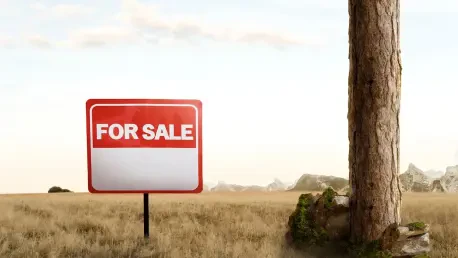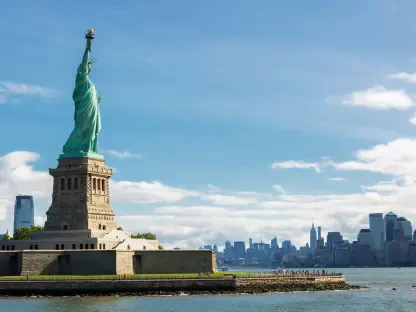The recent proposal by a Republican budget bill to sell over 2 million acres of public land across 11 states has ignited significant controversy and debate. It aims to transfer ownership from federal to local hands, with the intention of generating revenue, enhancing domestic energy production, and increasing housing infrastructure. Senator Mike Lee of Utah spearheads this initiative, arguing that Washington has habitually mismanaged these lands. He insists that local control is crucial for better oversight. However, an array of critics, from conservationists to local politicians, have voiced strong objections, fearing the potential loss of cherished lands to developers and the undermining of environmental conservation initiatives.
Lack of Parcel Specificity Raises Concerns
Resistance to Undefined Land Sales
One of the most contentious aspects of this proposal lies in the ambiguity surrounding which specific parcels of land will be offered for sale. The directive for the Department of the Interior and the Department of Agriculture to sell between 0.5% and 0.75% of their extensive land holdings remains vague, raising alarms about hasty, uninformed land disposals. This lack of precision affects some of the country’s most valued landscapes, managed by agencies like the Bureau of Land Management and the Forest Service. A thorough data analysis conducted by The Wilderness Society concludes that over 250 million acres may be jeopardized, instigating concerns among various stakeholders regarding the precedent such a large-scale transaction would set for future land management.
The absence of clear guidelines on which lands will see the auction block complicates the debate, causing uncertainty and unease among those who understand and appreciate the intrinsic value of these public lands. The notion of selling potentially untouched, ecologically important, or culturally significant areas without a comprehensive plan evokes a strong emotional and rational response from potential defenders. They fear the irreversible effects such sales could have on local ecosystems, recreational areas, and even cultural landmarks cherished by communities and the nation at large. Without transparent criteria, the initiative seems disconnected from grounded environmental policy and potentially prioritizes short-term financial gains over enduring ecological and communal health.
Economic and Access Implications
Senator Martin Heinrich and Representative Ryan Zinke have raised substantial concerns regarding the logistical practicality of transitioning isolated parcels into developed areas. While the proposal champions economic development, opponents argue that such development isn’t viable everywhere. When these lands relinquish their federal protections, public access, which is imperative for sectors like outdoor recreation and tourism, could be significantly hindered. This, in turn, poses a threat to Western economies heavily reliant on this accessibility. Critics of the sale question whether fiscal advantages outweigh the loss of both direct economic activities and the intangible benefits these open lands provide to residents and visitors alike.
From the insights shared by these political figures, it becomes clear that the detection of isolated parcels holds more challenges than solutions for infrastructural expansion. These pieces of property often lie in areas that lack the necessary infrastructure, such as transportation networks or utility support, which could render them costly ventures rather than profitable opportunities. When these lands become privatized, public access, traditionally a pillar of Western states’ outdoor economies, risks being replaced by restricted access and privatized benefits. Such a shift could negatively affect a wide array of residents, businesses, and communities that thrive on a shared and open landscape.
Bipartisan Opposition and Cultural Significance
Political Unity Against Land Sales
In a rare show of bipartisan solidarity, disparate political groups have unified against this proposal, highlighting a shared patriotic attachment to America’s public lands. Conservation advocates like Benji Backer emphasize the broad-based resistance; an April poll indicates a staggering 71% of Americans, cutting across political divisions—whether they are supporters of former President Trump or Vice President Harris—voicing their opposition to land sales. For many, reducing these lands in favor of potential tax breaks for the wealthy is seen as a betrayal of national trust and generational legacies, underscoring the political and cultural weight these lands carry.
The unification across political factions underscores a unique commitment that transcends typical political discourse. It reflects an understanding that public lands are not merely economic or political instruments but are essential parts of the national heritage that must be preserved. This case shows a growing consensus, suggesting possible realignment in conservation policy that values collective ownership and enjoyment over privatized access. Public opposition has awakened a discourse on what truly constitutes national wealth and prosperity, shifting focus from purely financial metrics to include historical, biological, and societal dimensions.
Shared Legacy or Lost Resource?
The debate over the sale encapsulates a broader narrative about the struggle between modernization and preservation. With staunch conservationists and pragmatic developers at odds, the discussion centers around defining America’s identity in terms of its landscapes. The narrative emerging from these debates reflects a powerful tension between advancing infrastructure and preserving the essence of America’s natural geography. This debate is not bound merely by economic or environmental considerations but instead embodies America’s long-standing relationship with its land—a relationship often shaped by appreciation for untouched spaces and the stories they tell.
As discussions press on, they highlight the ever-present challenge of balancing development needs with environmental stewardship. The promising leads one must consider involve harmonizing public landscapes’ distinct cultural importance with contemporary growth demands. All the while, policymakers must consider the resonant public sentiment that demands these lands remain untouched repositories for future generations. The paradox that arises is one of leveraging public lands for progress while respecting their role as bastions of ecological diversity and cultural grandeur. The future requires thoughtful strategies that neither sideline public aspirations nor compromise on growth potential.
Reflecting on America’s Environmental Future
The recent Republican budget bill proposal to sell over 2 million acres of public land across 11 states has sparked intense debate and controversy. This initiative seeks to transition land ownership from federal to local authorities, with the aims of generating revenue, boosting domestic energy production, and expanding housing infrastructure. Senator Mike Lee from Utah is leading this initiative, contending that the federal government has consistently mismanaged these lands, and asserting that local control would provide more effective oversight and stewardship. However, the proposal has faced strong opposition from various groups, including conservationists and local politicians, who are deeply concerned about the potential risks. Critics argue that transferring ownership could lead to the loss of cherished natural landscapes to developers and jeopardize environmental conservation efforts. They worry that local entities may lack the resources or commitment to protect these lands as effectively as the federal government.









